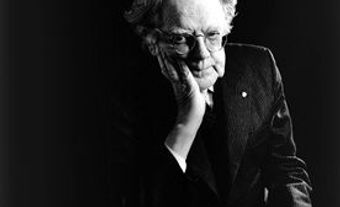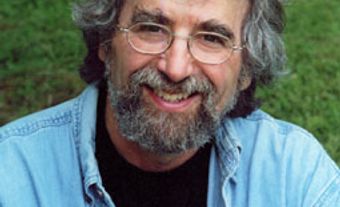Travel Literature
Hundreds of travel books on Canada have been published in the last 2 centuries, packed with cultures and climate, people and places. Long subtitles specify their scope, as, for example, George Head's Forest Scenes and Incidents in the Wilds of North America; being a Diary of a winter's route from Halifax to the Canadas, and during four months' residence in the woods on the borders of Lakes Huron and Simcoe (1829). Most titles are shortened here.
Earliest English reports, in Richard Hakluyt's Divers Voyages (1582) and The Principall Navigations (1589; 1598-1600), and Samuel Purchas's Hakluytus Posthumus (1625), mostly described rocky shorelines; but late 17th- and early 18th-century French travellers Louis HENNEPIN, L. A. de LAHONTAN and P.F.X. de CHARLEVOIX, and the Swede Pehr KALM moved inland to describe Québec life.
French Canadian Culture
French Canadian culture retained dominant interest for British writers, from Isaac Weld's Travels Through the States of North America and the Provinces of Upper and Lower Canada (1799), George HERIOT's Travels through the Canadas (1807) and John Lambert's Travels (1810 - beautifully illustrated in aquatint) to William Teeling's England's French Dominion (1932).
American writers who also relished the quaint Old World flavour of convent and citadel included John Ogden (A Tour, 1799), H.D. Thoreau (A Yankee in Canada, 1866), Walt Whitman (Diary in Canada, 1904), Anson Gard (The Last West, 1906) and Dorothy Duncan (Here's to Canada, 1941). Some American travellers also felt the charm of the Maritimes - eg, John Cozzens in Acadia (1859); and later the attractions of the northern frontier - eg, Warburton Pike (Through the Subarctic Forest, 1896).
Colonial and Republican Life
To British tourists the American presence in Canada was puzzling. Those Britons who tucked a Canadian tour into a visit to America in order to test the difference between colonial and republican life included Basil Hall (Travels, 1829), Frederick Marryat (A Diary in America, 1839), Charles Dickens (American Notes, 1842), Anthony Trollope (North America, 1862) and Basil Newman (American Journey, 1943).
Military men reported on GARRISON life as a distinctive imperial feature. Gentlemanly sports, flirtations, road building and marches added verve to Colonel Richard Levinge's Echoes from the Backwoods (1846), George Warburton's Hochelaga (1846), Colonel J.E. Alexander's L'Acadie (1849) and Sir Richard Bonnycastle's The Canadas in 1841 (1842) and Canada and the Canadians (1846). Lieutenant Francis Duncan described Our Garrisons in the West (1864).
"Encircled in a Fur Cap"
Anywhere in Canada, "a face yet burned by the suns of India, encircled in a fur cap" might appear to "a friend from China or Aldershot." Officers and other British gentlemen wrote often about sporting pleasures; eg, Captain F. Tolfrey's The Sportsman in Canada (1845), Campbell Hardy's Sporting Adventures in the New World (1855) and P.E. Doolittle's Wheel Outings in Canada (1895).
Other observers described the alternate culture - or lack of it - outside the garrisons in backwoods settlements. Sour reports on narrow, isolated lives appear in John Howison's Sketches of Upper Canada (1821) and Isaac Fidler's Observations on Professions, Literature, Manners, and Emigration (1833). The unglamorous life of pioneers is described by E.A. Talbot in Five Years' Residence (1824), which parodies the colonizer's glowing accounts of the trip upriver to Ontario; disillusionment is tinged with bitterness in comparable later reports, such as W.H.P. Jarvis's The Letters of a Remittance Man (1908), N.P.R. Noel's Blanket-Stiff (1912) and E.F.G. Fripp's The Outcasts of Canada (1932).
But some settlers' stories strike a happier note of acceptance of this strange, ungenteel life: Samuel Strickland's Twenty-Seven Years in Canada West (1853) presents advice for prospective British immigrants, and A.J. Church edited the letters of his 2 young sons in the cheery Making a Start in Canada (1889).
Canadian Women
Canadian women appear in all these reports, as pretty French Canadian "muffins" or as indomitable ladies in the lonely bush. Some women, temporarily based in Canada, contributed excellent books on their travels, as, for example, Anna Jameson's Winter Studies and Summer Rambles in Canada (1838), Lady Monck's My Canadian Leaves (1873), Lady Dufferin's My Canadian Journal, 1872-78 (1891), Lady Aberdeen's Through Canada With a Kodak (1893), Marion Cran's A Woman in Canada (1910), Georgina Binnie-Clark's A Summer on the Canadian Prairie (1910) and Eva Hasell's Across the Prairie (1922).
Other ladies, birds of passage, also published their impressions, among them Isabella Bishop (1856) and the duchess of Somerset (1890). They were particularly aware of the environment - winter cold, mosquitoes, autumn colours and wild flowers - although they also comment on social conditions. John Mactaggart in Three Years in Canada (1829) and John Bigsby in The Shoe and Canoe (1850) give an equally vivid sense of harsh conditions and varied terrain.
Travel Books
Travel books add to our sense of life in the Canadian art world: Horton Rhys in A Theatrical Tour for a Wager! (1861) and Peggy Webling in Peggy (1924) give inside glimpses of touring life on provincial stages; T.R. Richman in Short Notes (1886) recounts discussions with fellow architects; and Marion Cran spends a chapter on Canadian art and artists.
In Wanderings of an Artist (1859) Paul KANE combines glimpses of the artist's life with notes on his dominant subject, the Canadian Indian. Other travellers emphasized the Indian peoples as well. George SIMPSON in An Overland Journey Around the World (1847) begins with an account of the great treaty gatherings; L. Oliphant in Minnesota and the Far West (1855) and J.G. Colmer in Across Canadian Prairies (1894) extend the story to the Plains Indians; S.P. Day in English America (1864) updates the Manitoulin gatherings; and B.C. 1887 (1888) by J.A. Lees and W.J. Clutterbuck adds an effective mix of comic and sympathetic vignettes of West Coast Indians to its many other excellences.
Travellers generalize from very selective experience, but the travel books are the best, and for many decades the only, reports on contact between native peoples and other Canadians. In this as in many other ways, W.F. BUTLER's The Great Lone Land (1872) is a most important document.
In the later 19th century the journey across the prairies to, and sometimes through, the Rocky Mountains became increasingly popular. British visitors included the earl of Southesk, who published a record of his travels of 1859-60 in Saskatchewan and the Rocky Mountains (1875), and Viscount Milton and W.B. Cheadle, whose Northwest Passage by Land (1865) gives a good picture of the prairies. Fraser Rae reported on his travels from Newfoundland to Manitoba (1876), and in 1884 Governor General the Marquess of Lorne published Canadian Pictures.
Overland Journeys
Canadians too began to write travel books in increasing numbers; G.M. GRANT (Ocean to Ocean, 1873) and Charles HORETZKY (Canada on the Pacific, 1874) both recorded their experiences on the difficult overland journey. Sandford FLEMING, surveyor and chief engineer for the Canadian Pacific Railway, wrote about his travels in England and Canada (1884). The opening of the CPR in 1885 made transcontinental travel very much faster and easier, and travel books proliferated.
The new style of travel was reflected in Edward Roper's By Track and Trail (1891) and Douglas Sladen's On the Cars and Off (1895). Twentieth-century accounts of the transcontinental tour include Bruce Hutchison's The Unknown Country (1942) and Eugene Cloutier's Le Canada sans passeport (2 vols, 1967; tr No Passport, 1968), a Québecois account that is tinged with tension over biculturalism.
A Vision of Great Land Terraces
Even the great West, however, could not supplant Niagara Falls as the showpiece of Canadian travel books. Most tourists would agree with George Warburton: "The sight was precisely what I expected - the sensations it caused, totally different." Of all Niagara pieces, the most exciting is perhaps Charles Lyell's in Travels in North America (1845): this geologist expanded his theory of fossil life as he explored the escarpment, then topped his fine description of the falls with the report of a ride northwards, presenting a vision of great land terraces circling upward from the Great Lakes to the Ontario northlands.
Air travel has ended the slow experience of distance, the passage through changing regions, the encounters by the way that were once the staple of Canadian travel books. Few travellers keep travel diaries, and fewer publish them. One modern development is the appearance of travel poems, such as Earle Birney's in Ice Cod Bell and Stone (1962), Al Purdy's in North of Summer (1965) and John Newlove's in Black Night Window (1968). These poems continue the function of travel books: by creating and clarifying our image, at home and abroad, they help create Canada.
See also EXPLORATION AND TRAVEL LITERATURE; FOREIGN WRITERS ON CANADA IN ENGLISH; FOREIGN WRITERS ON CANADA IN FRENCH; CANADIAN TRAVELLERS ABROAD.

 Share on Facebook
Share on Facebook Share on X
Share on X Share by Email
Share by Email Share on Google Classroom
Share on Google Classroom


